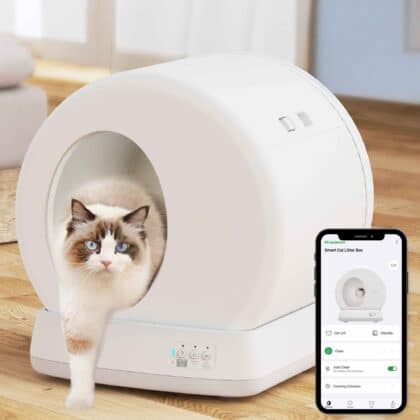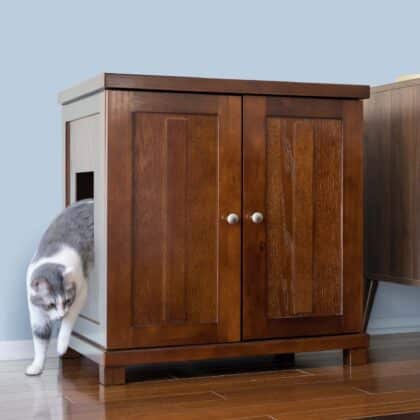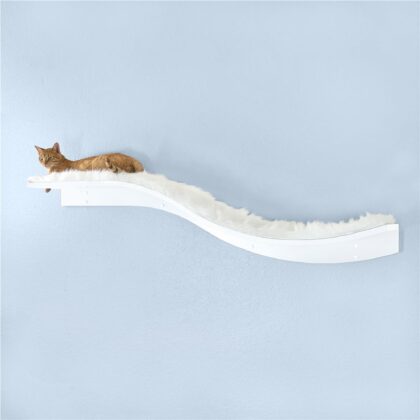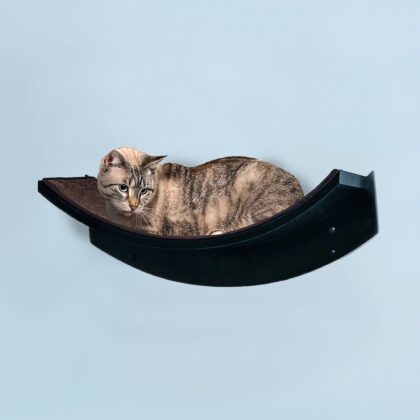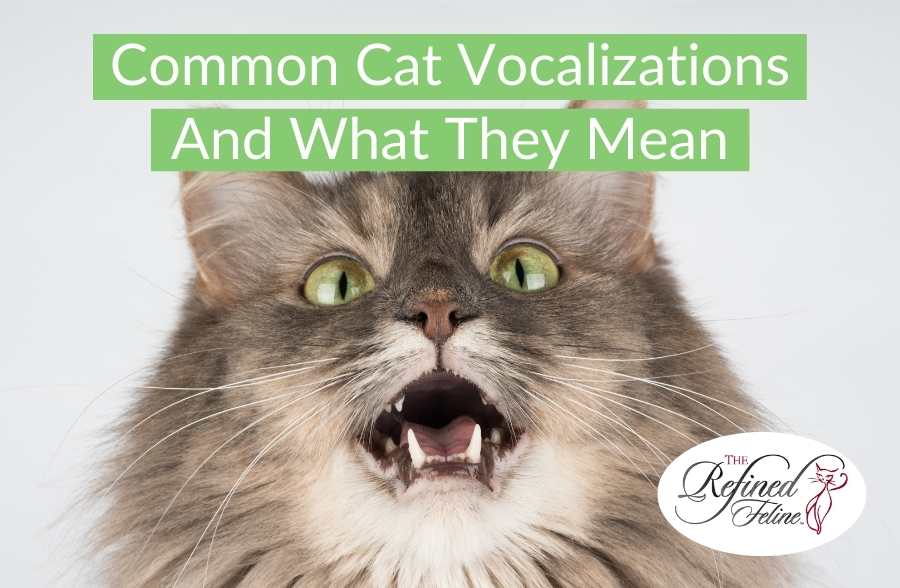
Common Cat Vocalizations And What They Mean
Even for cat parents, it can be confusing when a cat meows. Do they want a treat, attention, or playtime? When you think you’ve gotten used to your cat’s unique meows, they can always throw you a curveball. So, here is a breakdown from The Refined Feline of the most common cat vocalizations.
Cat Communication Is Complex
Cats can do more than just meow. Cats have a wide range when it comes to vocalizing, even more than dogs! While a dog can make around ten sounds, a cat can make over 100. They are one of only a few carnivores with a high pattern of vocalization. Like most animals, cats will communicate differently with their own species than they do with humans.
Most of the cat-to-cat communication comes from body language though, and only on a few occasions do they choose to vocalize. However, because they know how much humans vocalize, they tend to “speak” with us more than they would with their own species. A cat’s environment and how socialized they are can play a part in how vocal they are too. For example, outdoor cats that aren’t as familiar with how humans communicate may be less vocal than indoor cats in households.
Common Cat Vocalizations: 4 Categories
Cat’s vocalizations are usually broken down into four main categories:
-Mom to Kitten Interactions
-Mating Interactions
-Agonistic Interactions
-Cat to Human Interactions
In most studies, researchers categorized a cat’s vocalization into separate categories too, including murmur, vowel, and strained intensity patterns. Some researchers even broke it down further when it comes to the sounds. They made categories such as closed mouth, fixed open mouth, and the mouth steadily closed but producing sounds. Cat vocalizations are so complex that many people have tried to use pet buttons to improve communication with their beloved pets.
7 Most Common Vocalizations of Housecats
Since cats are so complex in their wide range of vocalizations, it can be tough to understand every single nuance. When it comes to the typical housecat, there are seven common vocalizations you’ll be familiar with. The seven common vocalizations we will look deeper into are: Meow/Miaow, Purr, Trill/Chirrup, Chatter/Chitter, Hiss, Snarl, and Shriek.
#1: Meow or Miaow
The most common form of communication from a cat is the meow. It’s mostly used, especially with humans, in the use of solicitation. Your cat may be hungry, want attention, or wants a toy and is asking politely. They may also be meowing a quick greeting before asking for something as well. If they don’t receive what they want, the meow may become longer and more frequent or insistent. You may hear a meow from kittens searching for their mother, but a meow is most often used towards humans. The intensity, frequency, and length of the meow will vary depending on your cat and what they want. One cat’s meow won’t be the same as another cat’s meow, even if they are asking for the same thing!
#2: Purr
Purring is most associated with positive interactions, whether with a fellow feline or a human. A cat will purr when they are content but also when they are not feeling well. If they are in a high level of pain, they may use their purr as a comforting measure. Some research has even shown that a cat’s purr is at a healing frequency of sound! Most of the time, though, a cat will purr with contentment from being around their person or another cat who they like.
Mother cats will also purr with their kittens, and their kittens will purr back, especially during nursing. Your cat may purr while you’re grooming or petting them, or while they are curled up on your lap. A purr’s level of frequency can also change from cat to cat. You may barely hear one cat’s purr while another cat’s purr is so loud you can’t focus on anything else!
#3: Trill or Chirrup
A trill is used between cats and humans as a form of greeting or friendly interaction. Trills will be used in combination with meows, especially with humans, to greet and then start asking for food or attention. A chirrup is a bit like a cat’s meow and a trill combined. It’s usually used when mother cats are calling for their kittens to stay closer to them.
#4: Chatter
Chattering is usually heard when your cat is watching prey but can not attack the prey. A lot of cats watching birds outside will chatter, which is similar to a chirpy type of meow. Typically directed towards live prey, a cat may even use this chatter towards a toy as well.
We don’t fully know why these common cat vocalizations happen, but it’s thought to be primarily out of frustration. It may also be in anticipation of going after the prey and less about feeling frustrated. Some researchers even think the chatter may be the cat imitating the noises of birds or mice. This form of trickery would then bring the prey closer and make catching them easier.
#5: Hiss
A hiss can be directed at any animal and is often used as the first stage of warning. A cat that is scared or shy will use a hiss to warn someone off, changing its body language to something more defensive. They may arch their back, raise their hackles, turn their ears backward, and try to appear bigger and more threatening.
A hiss will be a long exhalation of breath when a cat’s mouth remains wide open, and the teeth are bared. If a cat is unfamiliar with people, it may also spit after hissing, as another form of saying, “keep away”.
#6: Snarl
Most commonly used in defensive moves, a snarl is another sign to back away from that cat. A snarl could be directed toward another cat or human, depending on the situation. It’s mostly used to frighten or intimidate the other party. This will potentially make the other cat go away and they won’t have to take any further measures.
A snarl occurs during a fast inhalation while their mouth is wide open. The snarl will be loud, harsh, and high-pitched. Snarls usually occur when cats are already locked into aggressive actions or when they may be experiencing pain.
#7: Shriek
A shriek is typically a high-pitched, howl-like yell that should not be ignored by humans. This typically signals some type of distress or pain in a feline and should be addressed immediately. A cat that’s highly fearful may shriek as well. Hopefully, this is one of the least common cat vocalizations you will hear.
You’re Now An Expert On Common Cat Vocalizations
This quick rundown of the seven most common cat vocalizations should help you understand your furry feline better. A cat’s communication can be complex when trying to ask humans for something. So, it’s always a good idea to focus on their body language first and foremost. Really try to figure out which vocalization your cat is using, and go from there!


